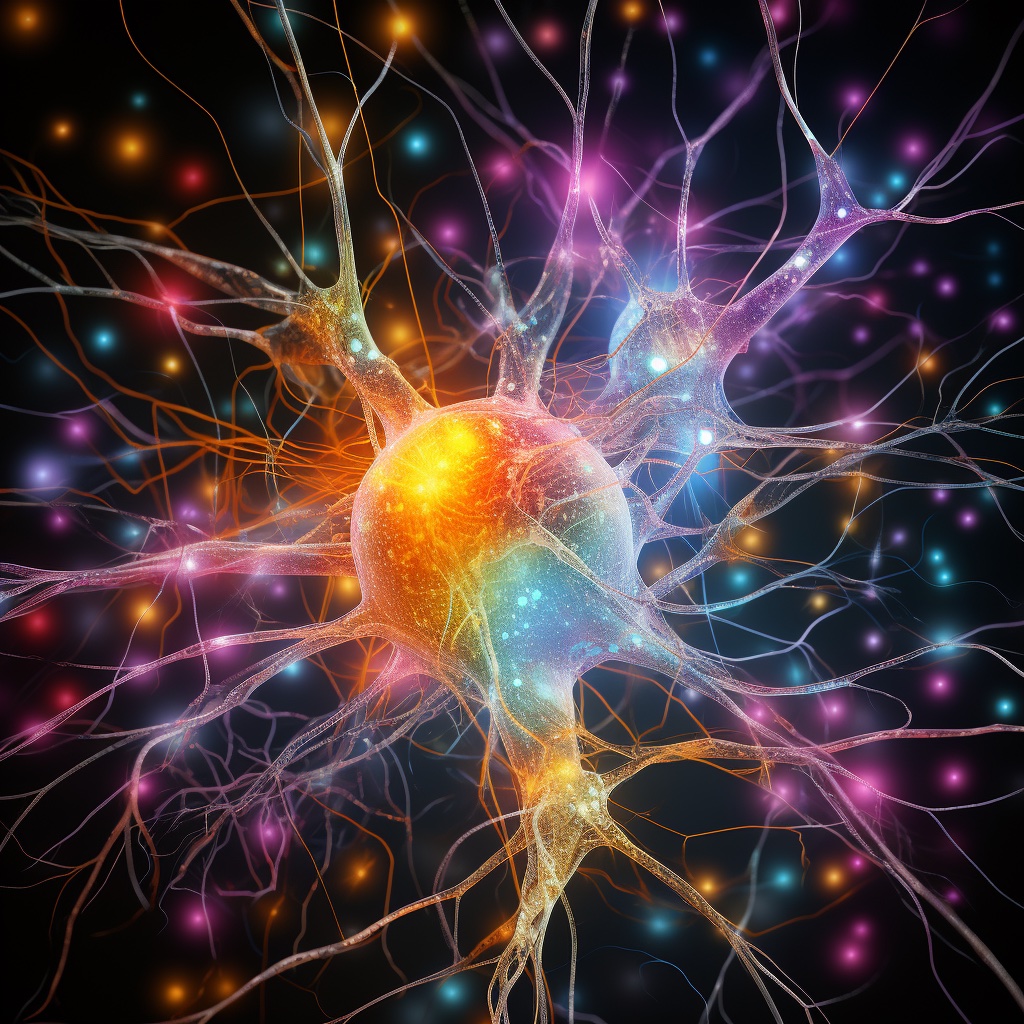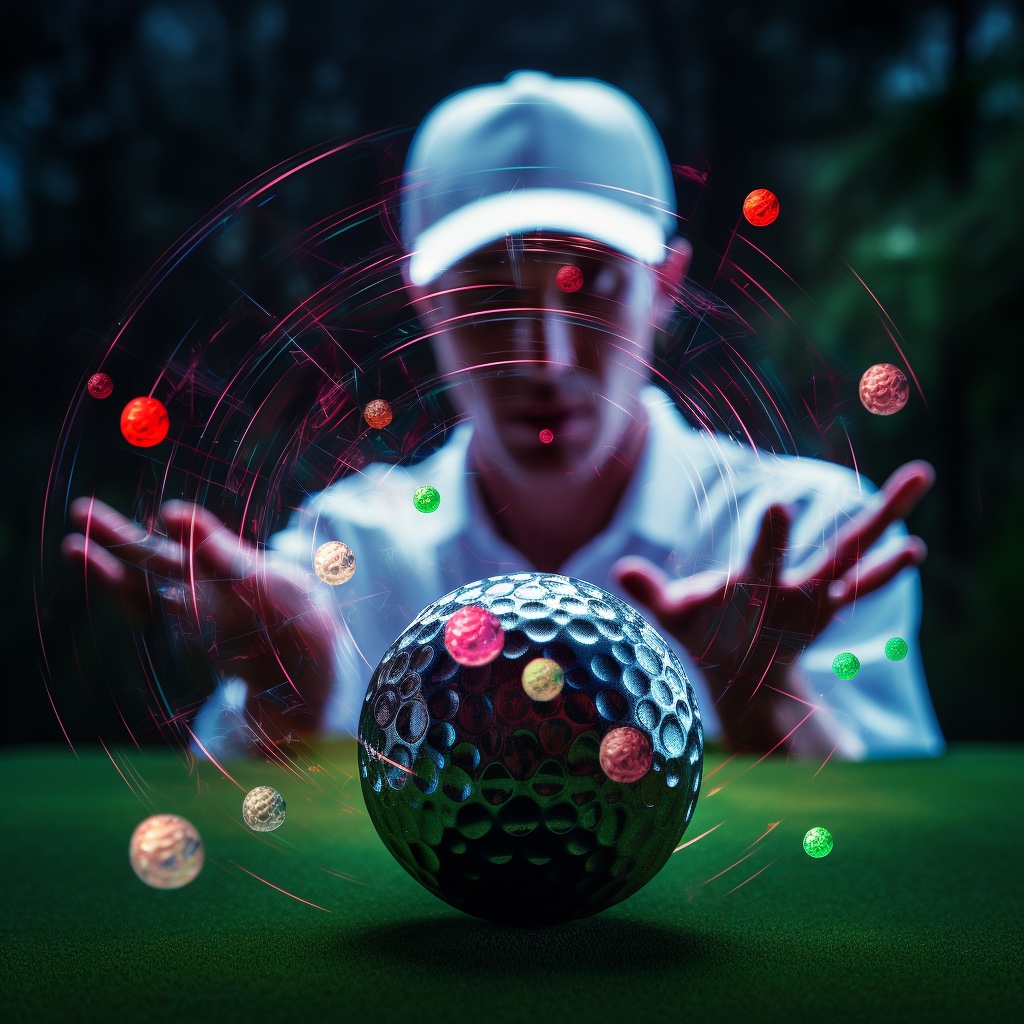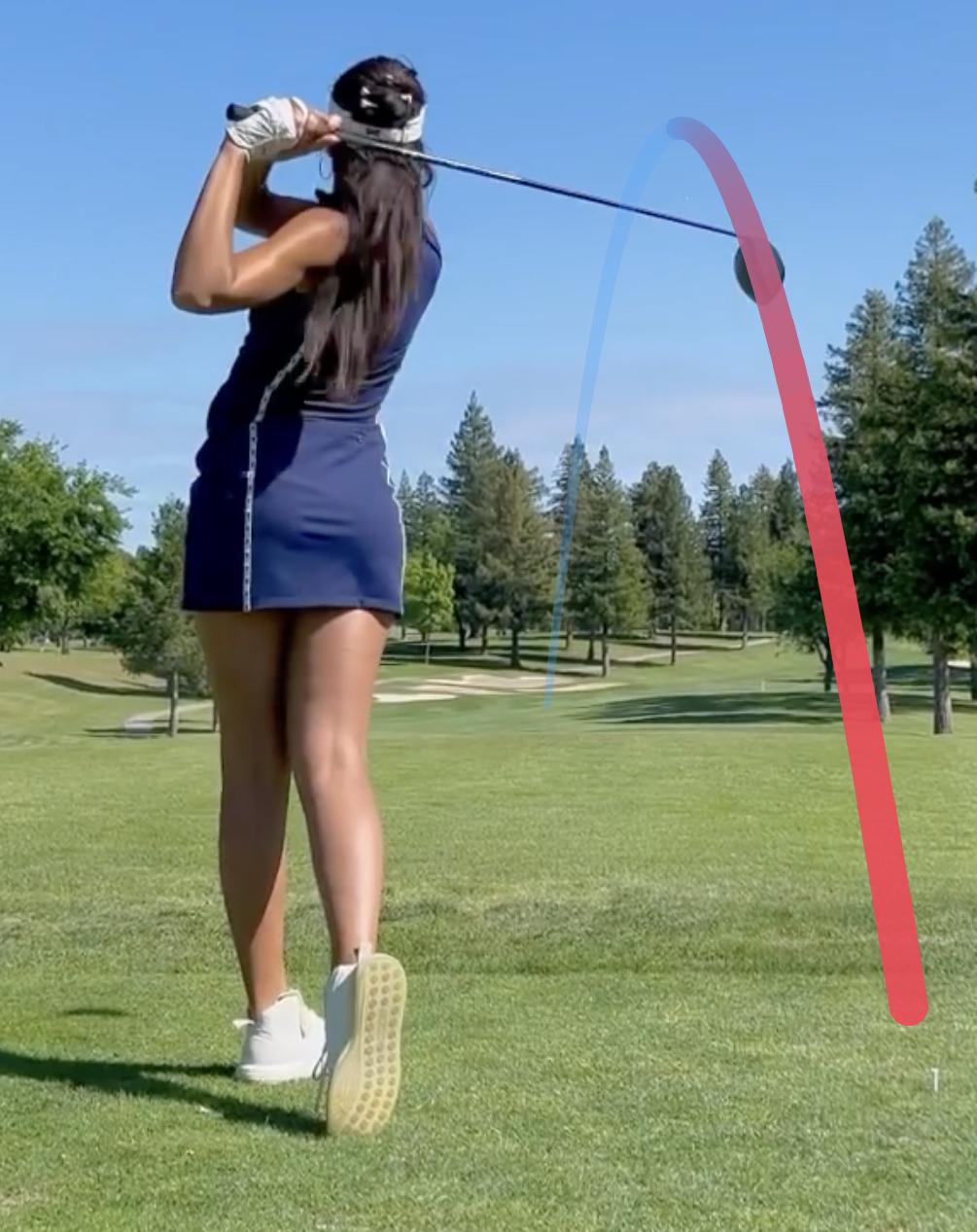Exploring the Advent of Golf Visualization & Its Benefits for High Performance Gameplay

Golf is 10% movement and 90% psychological, according to renowned golfer Arnold Palmer: the cumulative duration of the golfer's swings and ball strikes over the 72 holes amounts to around seven minutes and 30 seconds, resulting in a remaining duration of 15 hours, 52 minutes, and 30 seconds designated for cognitive processes and decision-making.
Yet, what does this 90% entail? How does one harness the mind's immense potential to improve their game on the green?
Jack Nicklaus, the legendary golfer, attributed his success to the visualization technique throughout his illustrious career. He meticulously paired this cognitive strategy with rigorous pre-game preparations, encompassing elements such as in-depth technical training and optimal physical conditioning through dedicated fitness regimens and judicious nutrition selections. As he once said, “Never hit a shot, not even in practice, without having a very sharp, in-focus picture of it in your head.”
Visualization in the Context of Sports Performance
Colloquially referred to as imagery or mental rehearsal, visualization is a sophisticated tool. It involves a comprehensive mental exercise, where athletes mentally engage all senses to rehearse their sport, mirroring the competitive environment while still in a controlled training setting. Up to 45% of a performance improvement may be attributed to effective visualization, according to Peak Sports.
“Noted as one form of mental rehearsal, visualization has been popular since the Soviets started using it back in the 1970s to compete in sports. Now, many athletes employ this technique, including Tiger Woods, who has been using it since his pre-teen years. Seasoned athletes use vivid, highly detailed internal images and run-throughs of the entire performance, engaging all their senses in their mental rehearsal, and they combine their knowledge of the sports venue with mental rehearsal.” – Psychology Today
Functional MRI brain
studies
underscore a shift in brain activity from the left hemisphere to the
right during the process of visualization. Research has established the
upper right quadrant's superior capacity for intuitive and imaginative
functions, aligning the right hemisphere with creative imagination.
Conversely, the left quadrants of the brain are associated with logical
reasoning, strategic planning, and organization. By engaging the
creative facet of the brain, visual imagery is enhanced, subsequently
leading to improved performance.

Much like meditation, consistent practice of visualization can be highly effective. By incorporating all five senses, the brain can be conditioned to perceive imagined scenarios as reality. This mental trickery can catalyze positive changes, from boosting confidence to improving academic performance. In other words, visualization acts as a motivational lever, priming the individual for success.
Exploring the Differences Internal vs. External Visualization
For avid golfers aiming to refine their skills, how they visualize their game can be as crucial as their physical training. Broadly speaking, the visualization techniques can be bucketed into two primary categories: Internal and External perspectives. Let's tee off into these to understand their nuances better.
Internal Perspective: Imagine you're standing on the famous 17^th^ tee at TPC Sawgrass, feeling the weight of your club, the grip in your hands, and the gentle breeze against your face. This is the internal perspective in golf visualization. It's as if you're genuinely there, allowing for a realistic experience of the actual swing and shot. By utilizing this perspective, golfers can mentally walk through the course, preparing for various challenges and noting distinct cues. Many golfers find the internal perspective incredibly valuable, especially when rehearsing strategic plays for specific holes.
External Perspective: Now, envision watching a golfer, perhaps Tiger Woods or yourself, executing a flawless swing from a spectator's viewpoint. This external perspective lets you view the swing, stance, and shot from various angles, offering a comprehensive understanding of the technique. Especially beneficial for those refining their swing or adopting a new approach, this perspective can be instrumental without having previously executed the task.
Uncovering the Science of Gold Visualization
Some say that gold is the chess on grass - every swing, putt, and maneuver on the course begins not with our limbs but our brains. Before executing an impeccable drive or a precise chip shot, the mind must first conjure up a lucid image of the action and its anticipated outcome. It's like presenting a clear blueprint to the brain, ensuring an optimized translation of that image into physical reality.
What's truly intriguing is the brain's inability to discern between imagined and real actions. When an athlete indulges in visualization, the same muscles primed for the actual physical activity get triggered. This phenomenon, coined "Functional Equivalence" by sports scientists, underscores the inherent link between mental rehearsal and physical readiness.
Dr. Richard Suinn, a distinguished sports psychologist, conducted an experiment that perfectly encapsulates this concept. Through an experiment involving skiers and an EMG machine, a tool adept at gauging muscle activity, Suinn discovered an astounding revelation. As these athletes mentally traversed a skiing slope, the muscles integral to the act were activated, even without any physical movement.

University of Southern California researchers concluded that integrating visualization techniques significantly enhances a golfer's on-course performance. The research design bifurcated participants into two cohorts: one group engaged solely in physical drills, while the second amalgamated these drills with visualization exercises. Remarkably, the latter demonstrated a more pronounced enhancement in their golfing abilities compared to their counterparts, who relied solely on physical drills.
Similarly, a comprehensive study conducted by the University of Edinburgh sheds light on the holistic benefits of visualization for golfers, particularly in strengthening their mental fortitude. Subjects were guided through visualization exercises designed to augment focus, concentration, and self-confidence during play. The outcomes were striking, with those undergoing the visualization regime manifesting a marked elevation in their mental game in contrast to the control group, which did not participate in such exercises.
Exploring the Benefits of Visualization for Golf
Mastering Inattentional Blindness Through Visualization
Visualization is not merely about envisioning success but also serves as a powerful tool to block unwanted stimuli. Have you ever been so immersed in a novel that you failed to hear the clock ticking until someone mentioned it? Similarly, visualizing the perfect swing or shot can mentally sideline distractions, whether the crowd's buzz, a competitor's inadvertent noise, or the daunting hazards on the course. By harnessing visualization, golfers can foster a mental shield against negative thoughts and external distractions, focusing instead on the ideal trajectory, free from fear of bunkers or out-of-bounds areas.
Neuronal Activation and its Impact on Performance
Visualizing specific golf shots triggers neuronal pathways associated with those motions. Whereas the immediate benefits of visualization in sports are clear, its long-term advantages, both on and off the golf course, are profound. By consistently immersing ourselves in positive visualizations, we reshape our brain's neural pathways, prime our cells for specific emotions, and even potentially influence genetic expressions within us (as suggested by the evolving field of epigenetics). Thus, the visuals, internal dialogues, and feelings golfers cultivate should be deliberately positive, co-creating the ideal performance environment.
Muscle Activation Through Imagination
A fascinating study with skiers demonstrated the profound connection between visualization and physical response. While seated, skiers visualized navigating a slope, and EMG results revealed their muscles mirrored activation patterns as if they were genuinely skiing. This muscular response can be attributed to neuronal activation, emphasizing the intertwined relationship between mental images, neurons, and muscular reactions. Thus, how we visualize can profoundly impact performance, even in the subtlest movements.
Harnessing Neuroplasticity for Peak Performance
Neuroplasticity, the brain's ability to reorganize and adapt, underscores the power of thought and repeated action. When we visualize or practice consistently, our brain strengthens specific neuronal pathways, facilitating the formation of habits. On a continuous basis, this neuroplasticity enhancement is the foundation for skill acquisition and refinement.
Deploying Mental Triggers for Confidence
What if a golfer pressed their thumb and forefinger together after every successful golf shot visualized? Over time, this simple gesture could become a reservoir of confidence, with every squeeze evoking a cascade of positive memories and emotions.
Visualization's Long-term Benefits: Beyond the Golf Course
While the immediate benefits of visualization in sports are clear, its long-term advantages, both on and off the golf course, are profound. Though one shouldn't expect to inherit the athletic prowess of Usain Bolt merely through visualization, consistent practice can undoubtedly steer our cognitive tendencies in favorable directions.
How to Integrate Visualization into Your Golfing Technique
Golfers can enhance their performance by weaving visualization exercises into their regular practice routine. If you want to improve your performance the next time you play or practice, focus on what you see and how you feel, and learn to make the connection between your thoughts and actions.

Just like physical training, the effects of visualization take time to manifest. Patience is key—avoid quick changes if immediate results aren't apparent. Over time, consider these adjustments to enhance your practice:
-
Break the Scenery into Multiple Components - Start by forming a vivid mental depiction of the desired shot, picturing its trajectory, landing spot, and overall flight path in detail. During practice sessions, take a few moments to focus on visualization, perhaps pausing before each stroke to close your eyes and envision a successful shot.
-
Shift Perspectives - While many golfers visualize shots from their viewpoint, experimenting with a third-person perspective can benefit them. Although common in aesthetic sports, this external view can help eliminate self-doubt and enhance confidence.
-
Vary Speeds - Most often, visualizations occur at an accelerated pace. Occasionally, focus on a specific challenging section and visualize it in real time. In turn, the immersive approach allows you to engage with the environment's details and refine your mental model for game day.
-
Try Guided Visualization - Self-guided visualization is valuable, but guided sessions might offer fresh insights. Coaches can provide different angles and focus points, enriching your mental imagery. It also frees your mind from self-guidance, allowing you to focus more on the sensations and concentration of each golf movement.
-
Integrate all Senses - Engage all senses in the process - seeing, feeling, and hearing the envisioned shot - making the experience richer and more effective. Also, it is important to develop detailed imagery scripts that describe a triumphant shot or an entire successful round to anchor these positive visuals. As you finetune your visualization skills, challenge yourself by envisioning high-pressure scenarios, such as tournament settings, and emphasize maintaining composure.
Use Ace Trace – the Golf Tracer App that Improves Your Golfing Game
As an innovative golf tracer app, Ace Trace can be one of the first steps you take to enhance your golf visualization approach through ball-tracking tech for performance gains. Real-time trajectory, speed, and spin insights provide deep understanding, refining techniques, and targeting improvements.
Plus, the visual feedback provided by Ace Trace's video highlight feature is particularly valuable. Empowered by the shot tracker, watching your shots' flight paths, speeds, and spins on screen helps bridge the gap between theory and execution.

Optimized for golf and disc golf, our app features two versatile modes as a shot tracker: Free Curve for disc golf and more and Trace Golf for traditional golf shots. Thus, it allows you to correlate your intentions with the actual outcomes, helping you diagnose the reasons behind any deviations from your intended shot. Altogether, these actionable insights empower you to make targeted adjustments and accelerate your progress.
Beyond personal progress, the social dimension brought by Ace Trace fosters community and competition. Sharing shot highlights and reels connects golfers, making the sport more engaging and accessible. Ace Trace's user-friendly interface accommodates players of all levels, ensuring a smooth integration of this powerful tool into your golf routine.
Bottom Line
While visualization should not replace physical training, incorporating it as a complementary practice can markedly amplify your athletic performance. Ideally, one should execute visualization exercises in settings that mirror the actual competitive environment.
Just as an athlete wouldn't dream of introducing a new physical maneuver on the day of a critical event, the same disciplined approach should be applied to visualization techniques. Golfing excellence is a psychological journey, and Ace Trace's tailored, data-driven insights from the golf tracer app could become the key elements you need.